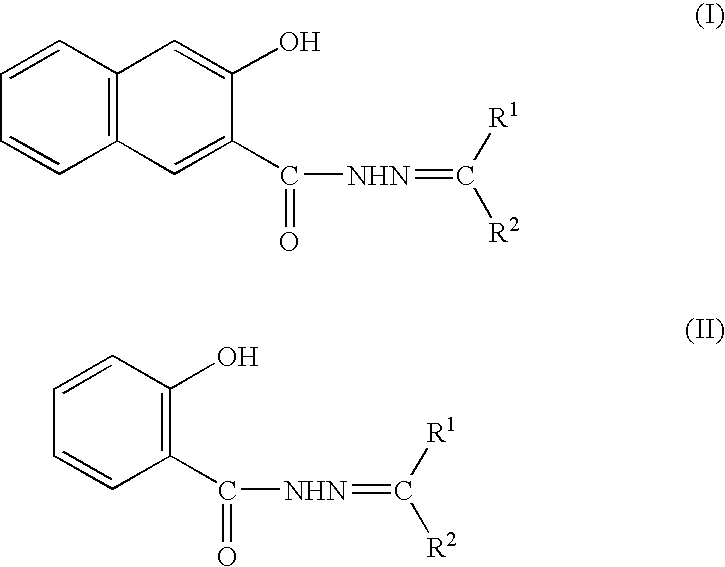Tires for heavy load
a tire and heavy-duty technology, applied in special tyres, film/foil adhesives, transportation and packaging, etc., can solve the problems of insufficient control of uneven wear, non-uniform wear, and restriction in the amount of heavy-duty tire compounding, so as to improve the resistance to uneven wear
- Summary
- Abstract
- Description
- Claims
- Application Information
AI Technical Summary
Benefits of technology
Problems solved by technology
Method used
Image
Examples
production example 1
Polymer A
[0061]Into a glass pressure container of 800 ml dried and purged with nitrogen are charged 300 g of cyclohexane, 32.5 g of 1,3-butadiene monomer, 17.5 g of styrene monomer, 0.025 mmol of potassium t-amylate and 1 mmol of THF, and 0.45 mmol of n-butyllithium (BuLi) is added to conduct polymerization at 50° C. for 3 hours. The polymerization system is uniform and transparent without precipitation from a start of polymerization to an end thereof. The polymerization conversion is approximately 100%.
[0062]To this polymerization system is added 0.12 mmol of 1M cyclohexane solution of DOTDC (dioctyltin dichloride) as a modifying agent to conduct modification reaction for 30 minutes. To the polymerization system is further added 0.5 ml of 5% isopropanol solution of 2,6-di-tertiary butyl paracresol (BHT) to stop the reaction, which is further dried to obtain a polymer A. The bound styrene content is 35% by mass and the vinyl bond content is 23 mol %.
production example 2
Polymer B
[0063]Into a glass pressure container of 800 ml dried and purged with nitrogen are charged 300 g of cyclohexane, 37.5 g of 1,3-butadiene monomer, 12.5 g of styrene monomer, 0.03 mmol of potassium t-amylate and 2 mmol of THF, and further added with 0.41 mmol of hexamethylene imine as a secondary amine. It is further added with 0.45 mmol of n-butyllithium (BuLi) to conduct polymerization at 50° C. for 2.5 hours. The polymerization system is uniform and transparent without precipitation from a start of polymerization to an end thereof. The polymerization conversion is approximately 100%.
[0064]To this polymerization system is added 0.09 mmol of 1M cyclohexane solution of TTC (tin tetrachloride) as a modifying agent to conduct modification reaction for 30 minutes. To the polymerization system is further added 0.5 ml of 5% isopropanol solution of 2,6-di-tertiary butyl paracresol (BHT) to stop the reaction, which is further dried to obtain a polymer B. The bound styrene content is...
production example 3
Polymer C
[0065]Into a glass pressure container of 800 ml dried and purged with nitrogen are charged 300 g of cyclohexane, 32.5 g of 1,3-butadiene monomer, 17.5 g of styrene monomer, 0.025 mmol of potassium t-amylate and 1 mmol of THF, and 0.45 mmol of n-butyllithium (BuLi) is added and further 0.41 mmol of hexamethylene imine is added as a secondary amine to conduct polymerization at 50° C. for 3 hours. The polymerization system is uniform and transparent without precipitation from a start of polymerization to an end thereof. The polymerization conversion is approximately 100%.
[0066]To this polymerization system is added 0.12 mmol of 1M cyclohexane solution of DOTDC (dioctyltin dichloride) as a modifying agent to conduct modification reaction for 30 minutes. To the polymerization system is further added 0.5 ml of 5% isopropanol solution of 2,6-di-tertiary butyl paracresol (BHT) to stop the reaction, which is further dried to obtain a polymer C. The bound styrene content is 35% by ma...
PUM
| Property | Measurement | Unit |
|---|---|---|
| mass | aaaaa | aaaaa |
| resistance | aaaaa | aaaaa |
| hysteresis loss | aaaaa | aaaaa |
Abstract
Description
Claims
Application Information
 Login to View More
Login to View More - R&D
- Intellectual Property
- Life Sciences
- Materials
- Tech Scout
- Unparalleled Data Quality
- Higher Quality Content
- 60% Fewer Hallucinations
Browse by: Latest US Patents, China's latest patents, Technical Efficacy Thesaurus, Application Domain, Technology Topic, Popular Technical Reports.
© 2025 PatSnap. All rights reserved.Legal|Privacy policy|Modern Slavery Act Transparency Statement|Sitemap|About US| Contact US: help@patsnap.com

